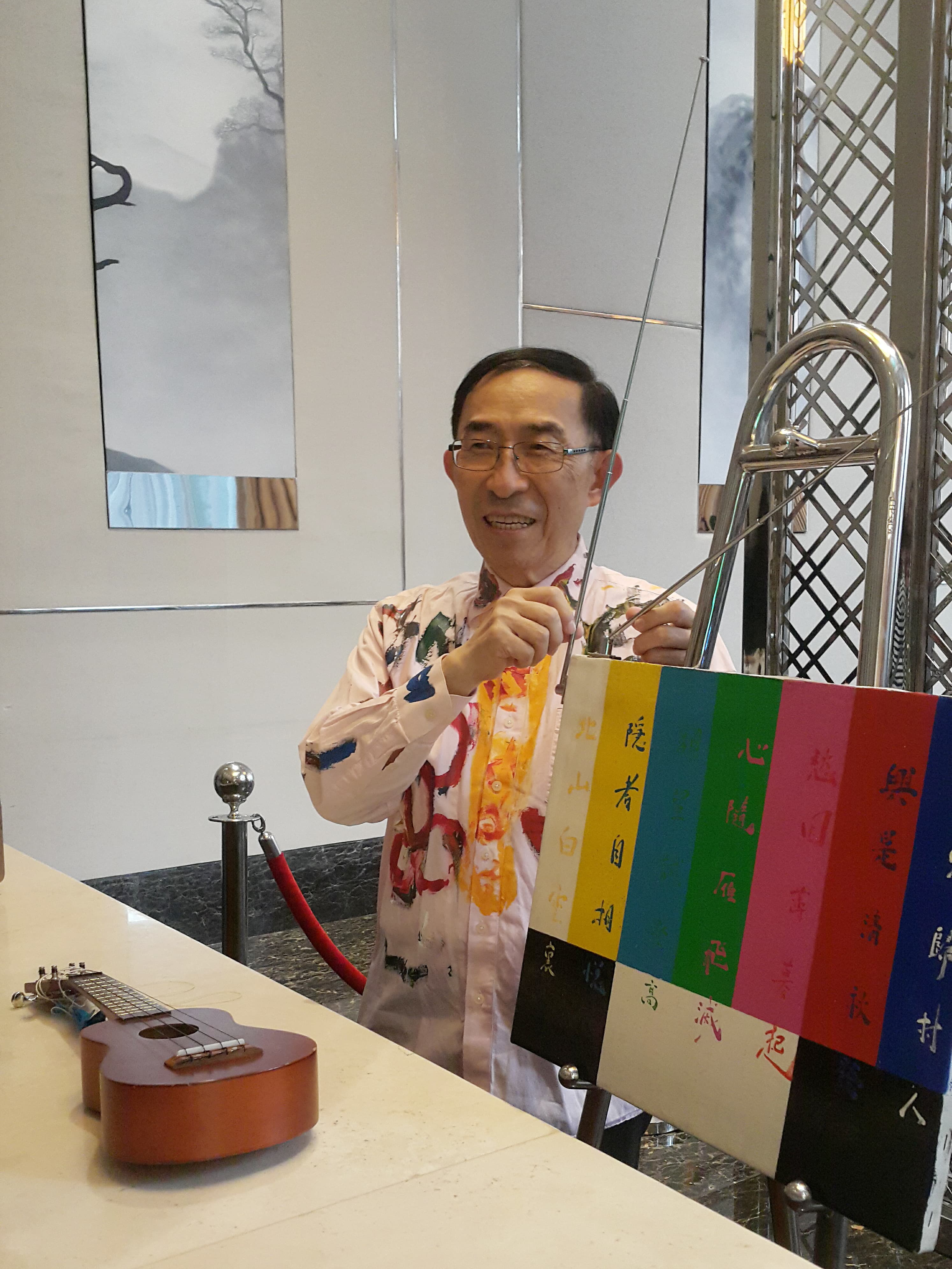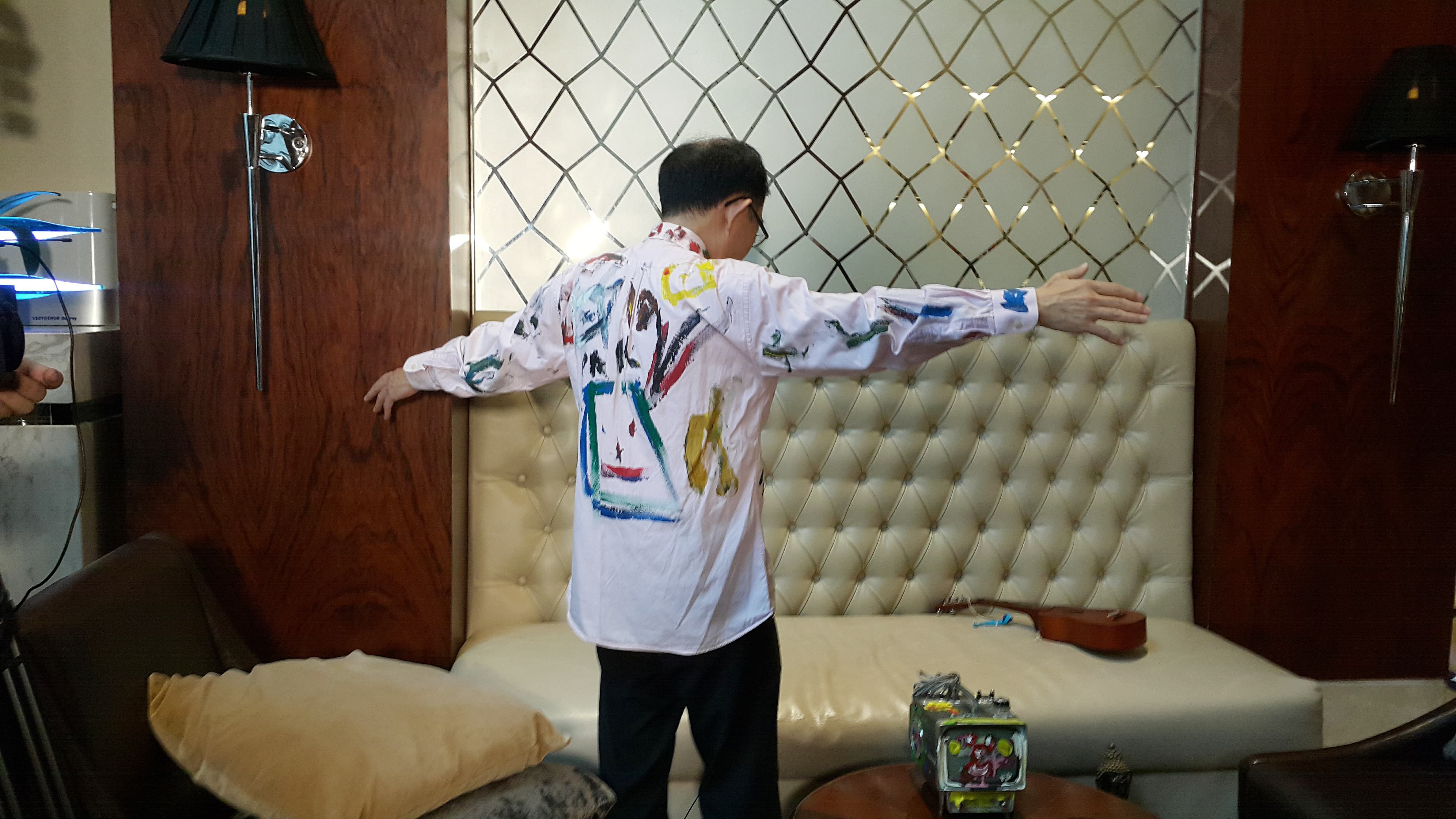By Bryle B. Suralta

To fellow artists, art critics and collectors, Nam June Paik is known as “the father of video art,” but to his nephew, Ken Hakuta, who now represents the Nam June Paik estate, he was the “crazy uncle.”
“One day, when he came from Germany to our apartment in Tokyo. And he used our family piano in a performance,” he remembers fondly.
He ended up destroying the piano just for the performance.
Ken says that the korean-american artist often visited different countries while he was growing up, as his uncle would often meet with the intellectual elite to gain new perspective. Paik eventually settled in New York City in the 1960s.
Wearing a shirt his uncle hand-painted, Ken is aware of the prestige that comes with Nam June Paik artworks. And with Leon Gallery International presenting “Nam June Paik in Manila,” the first Philippine exhibition of Paik’s art installations, he’s glad to witness the world appreciating his uncle’s work, even if most people didn’t understand him during his time.
Nam June Paik was ahead of his era when it came to multimedia art. As an international avant-garde, he foresaw the influence of the television on art in the global stage, grasping the would-be impact of consumer technology on culture, sex and politics.
In collaboration with the internationally renowned Gagosian Gallery, the exhibit will feature 24 Paik pieces from 1983 to 2005. This includes iconic installations such as the the “TV Buddha” and “One Candle.”
Paik married Buddhism and his fascination with the television and other electronic devices. He was also heavily influenced by “roboculture,” which is a movement defined by the popularization of robots in pop culture.
Ironically though, Ken, who is a television personality in his own right, says that his uncle never even watched television.
“I would tell him what was going on with the television. Then he’d steal my ideas. And he never gave me credit,” he jokingly says in the media lunch at Alfred (Makati Diamond Residences).
The gallery will officially open on October 22 at the ground floor of the Corinthian Plaza in Makati City. Additionally, J. Antonio Mendoza came up with the interior design concept for the space.
For Nam June Paik, the lasting relevance of his work has become more recognized as the years go by, having been the subject of numerous exhibitions in the international art scene. In Ken’s words, the best thing about any Nam June Paik piece is that it’s “the kind of sophisticated (sic) that a child would enjoy.”

Paik’s next retrospective “Nam June Paik: The Future Is Now” will also open at the Tate Modern in London in October 2019. Safe to say, Nam June Paik’s time has finally come.





